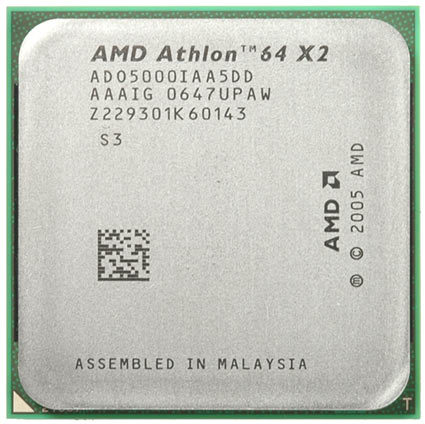Can AMD'S 65 nm Core Fight Back?
AMD Positions Brisbane To Replace Windsor
On December 5, 2006, AMD announced the availability of the first 65 nm Athlon 64 X2 processors for OEMs and system integrators. Although media worldwide received Athlon 64 X2 5000+ 65 nm samples shortly after the announcement, AMD treated this launch rather quietly. Even though we can scarcely find 65 nm Athlon 64 X2 processors for sale, we decided that it's still time for a close look at the new processor models. Our key questions are the same as yours. How much more efficient are the 65 nm versions? Are they more overclockable? Should one favor the 65 nm versions over the 90 nm chips? Let's get some answers.
AMD tried to generate as much positive PR as possible with its launch of the 4x4 Quad FX dual-socket platform and the public demonstration of a quad-socket server system based on the 65 nm Barcelona quad core, because the firm is right now catching up with Intel. This process is a natural occurrence in the industry, as AMD had itself been favored for around two years. The "catching up" refers to the fact that Intel has the newer processor architecture - Core micro architecture as opposed to AMD64, which is more than two years old - and the more advanced 65 nm manufacturing process on 300 mm wafers. These factors enable Intel to produce faster and more efficient processors, and even provide higher quantities.
Being behind doesn't mean that AMD is behind in all processor technologies and features, however. Even in looking at the overall platform, AMD and Intel are head to head when it comes to offering modern dual core solutions, 64-bit support (although nobody really cares about it), virtualization technology (if only there were a simple hypervisor for personal use) and power-saving techniques such as Cool'n'Quiet (AMD) or SpeedStep (Intel). When energy efficiency comes into the equation, AMD still has the advantage in that the DDR2 memory controller isn't part of the motherboard core logic, instead being directly integrated into the processor. So even though the Intel Core 2 Duo consumes less power than the AMD Athlon 64 X2, on average, motherboard components put AMD and Intel on par again.
Now, around a year after Intel first stepped into 65 nm manufacturing, AMD has introduced its own first 65 nm processors. This step is not only important in allowing the firm to output smaller and more efficient processors; AMD also switched the diameter of its silicon wafers from 200 mm to 300 mm with the process update. This effectively doubles the maximum production output for AMD, given that the yield rates from 200 mm and 300 mm wafers are comparable. Both the larger wafers and the smaller structure size also are important for the upcoming quad core processors that are expected in the middle of 2007. Unlike Intel, AMD plans to introduce a single-die monolithic quad core processor - Intel's Core 2 Quad is put together by combining two Core 2 Duo "Woodcrest" dies into one processor package.
There are four new Athlon 64 X2 models between 4000+ and 5000+ on the price list, but lower-end models and FX versions are still to come; they will be introduced at a later point. This makes it evident that AMD is capable of delivering mainstream products, but might not yet be able to introduce higher clock speeds to fight back Intel. For the time being, the 65 nm Brisbane core has to be seen as a mid-term replacement for the 90 nm Windsor.
Join our discussion on this topic
Get Tom's Hardware's best news and in-depth reviews, straight to your inbox.
Current page: AMD Positions Brisbane To Replace Windsor
Next Page Athlon 64 X2 Details
Patrick Schmid was the editor-in-chief for Tom's Hardware from 2005 to 2006. He wrote numerous articles on a wide range of hardware topics, including storage, CPUs, and system builds.
